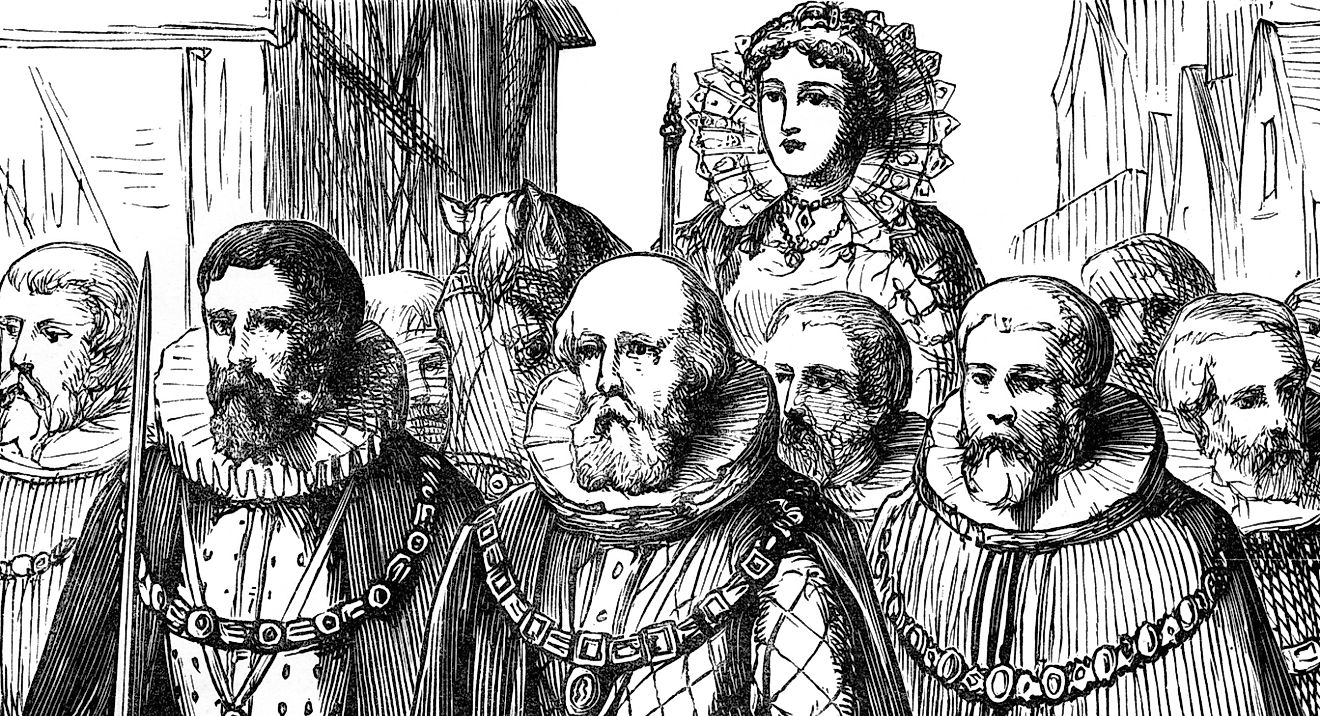Queen Elizabeth I of England and Ireland - World Leaders in History

5. Early Life
Queen Elizabeth I was born at Palace of Placentia, Greenwich, England, on the 7th of September in 1533. She was the daughter of Henry VIII and his second wife, Anne Boleyn. Her mother was executed two and a half years after her birth, with the marriage between Anne and Henry VIII annulled and Elizabeth declared to be an illegitimate child. She was the third in line to succeed to the throne, after her half-brother Edward and her Roman Catholic half-sister Princess Ann. Princess Elizabeth was extremely bright, and she received education from various tutors from Cambridge University, who were considered to be among the country's brightest minds.
4. Rise to Power
Edward reigned from 1547 until the time of his death in 1553. After Edward died, Mary became the Queen in 1553, and during her reign she restored Roman Catholicism and executed more than 300 Protestants. During Mary's reign, Elizabeth was imprisoned for nearly a year on suspicion of supporting Protestant rebels. In 1558, after Mary's death, Elizabeth succeeded her half-sister to the throne at the age of 25. She was the fifth, and also the last, monarch of the Tudor dynasty. She inherited a number of problems stirred up by Mary. At the forefront of these, England was at war with France, and there was great tension between England's different religious factions.
3. Contributions
Elizabeth addressed the heated religious tension by reestablishing the Church of England and creating a Common Prayer book. She ended the war with France and through much of her reign successfully avoided clashing with the other two superpowers of the European Continent, France and Spain. But by the mid-1580s, when England could no longer avoid war with Spain, the defeat of the Spanish Armada in 1588 associated Elizabeth with the greatest military victory in English history. She also supported voyages of discovery, which prepared England for the Age of Colonization and trade expansion.
2. Challenges
During Elizabeth's reign, England was facing constant threats of invasion from both Spain through Ireland and France by way of Scotland. The war against Spain was no longer successful after the initial defeat of the Spanish Armada and, together with other campaigns, military expenses were very high, which put great financial burden on the English people domestically. This led much of northern England to begin a rebellion in 1569. All of England suffered from high prices and a severe economic depression, especially in the countryside, by the last decade of the 16th Century.
1. Death and Legacy
Queen Elizabeth I descended into a state of debilitating depression in the Autumn of 1602, as she watched a series of her friends die. In March of 1603, she fell sick herself, and from that time on remained in perpetual melancholy. She died on the 24th of March, 1603, at Richmond Palace in Surrey. Elizabeth's 45-year reign is generally considered to be a glorious era in English history. Her re-establishment of the Church of England helped shape a national identity that remains in place to this day. She sought compromise among religious factions, and prevented religious tension from causing more turmoil in the country. She also helped improve England's status in relations abroad. Furthermore, the arts, especially the "Elizabethan theater" dramas, flourished during her reign.











